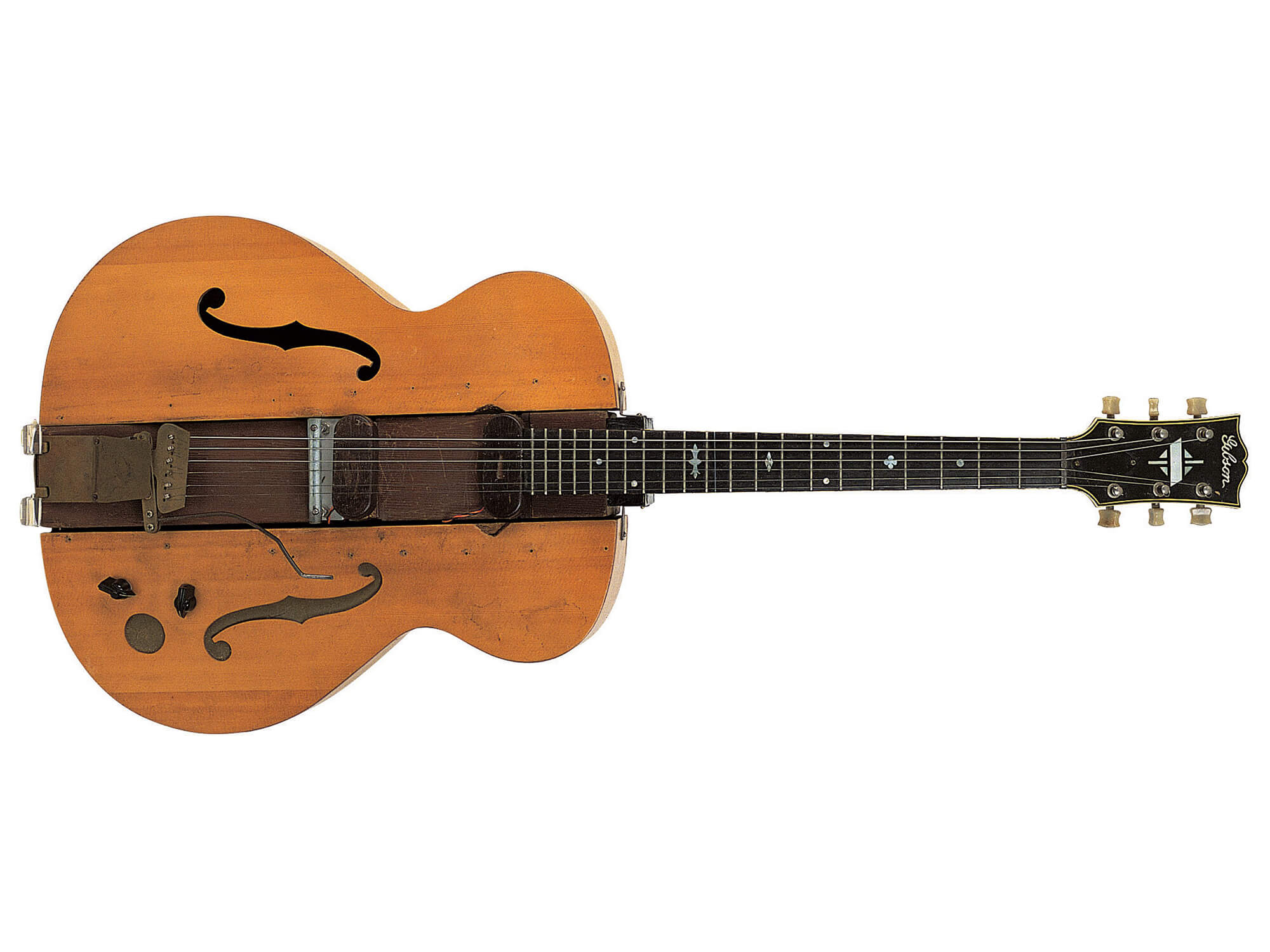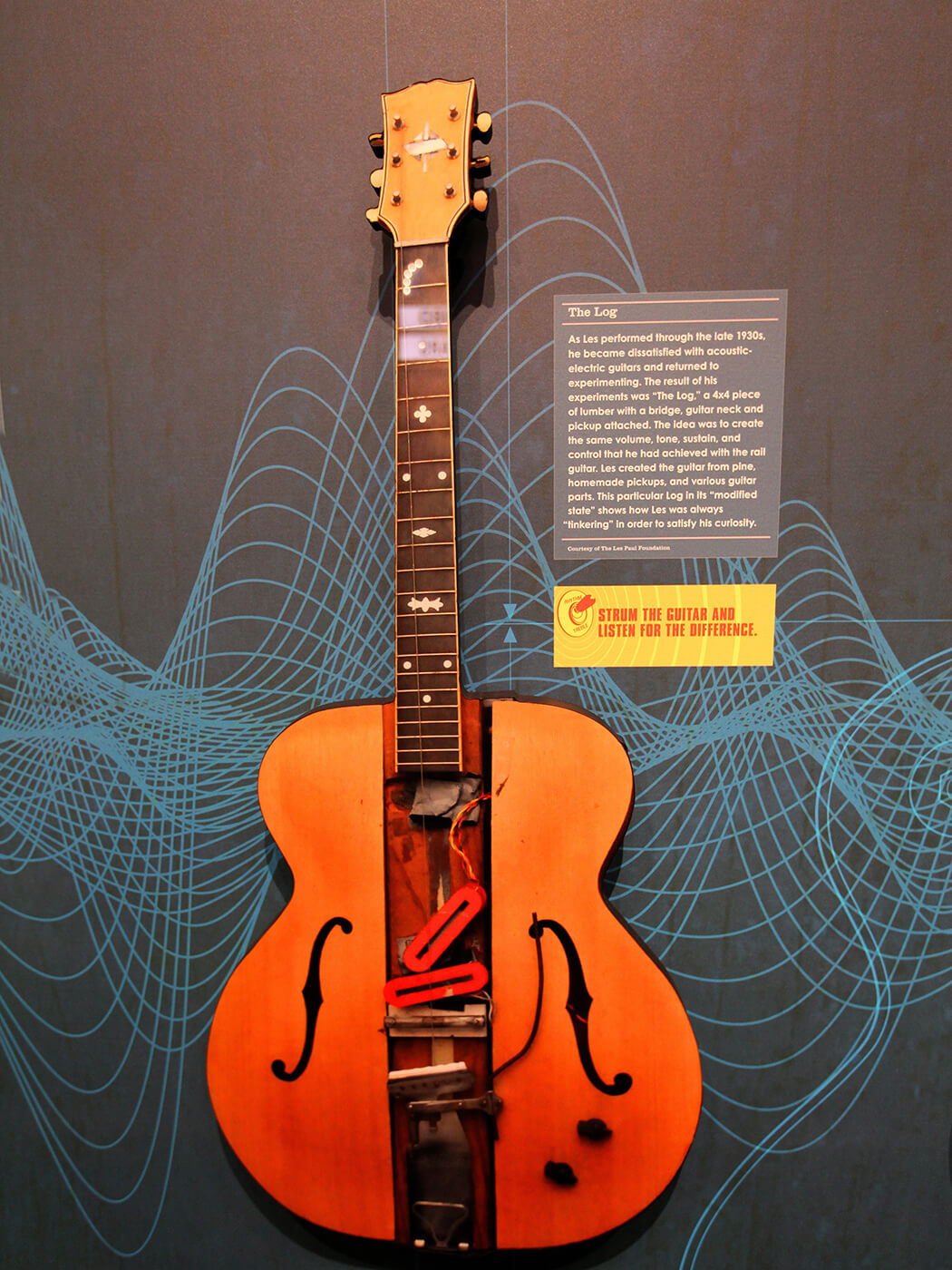Related Tags
How Les Paul’s Log guitar changed everything
Gibson’s Les Paul and ES-335 are two of the most celebrated models ever made – but their roots lie in a radical design known as the Log.

Image: Nigel Osbourne / Redferns
Responsible for the world’s first solidbody electric guitar, Les Paul is rightly regarded as a legend in the music industry. By the late 1920s, we’d already seen electrified instruments – people had been electrifying their archtop and flat-top acoustic guitars for years. It wasn’t until 1940 or so when Les Paul would radically alter music history with the introduction of an incredible prototype.
- READ MORE: A brief history of Gibson
Les Paul began construction on what would become the Log in 1939 after befriending Epiphone owner Epi Stathopoulo. Epi gave Les the keys to the company’s New York factory, where Les worked on the design after hours.
His somewhat crude invention consisted of a four-inch by four-inch block of pine, on which he attached a neck, bridge and pickups. He played the instrument live but people were initially bewildered by its unorthodox appearance. No matter. Les Paul had a clever response.
The luthier cut an Epiphone hollowbody in two and attached the two halves to either side of his four-by-four-inch slab. It was now essentially a through-neck construction, only with a separate neck piece. But, crucially, it looked not unlike a regular guitar. Its central pine slab also reduced feedback issues and increased sustain, while the guitar also featured a vibrato bridge patented by Doc Kauffman, the Vibrola. This is the Log as we know it.
It’s entirely possible, too, that Epiphone would’ve put the design into production if not for some unfortunate timing – shortly after the guitar was finished, war broke out and, not long later, Epi would pass away.
During the first rumblings of the Second World War in 1941, Les then presented the Log guitar to Gibson at their Kalamazoo headquarters. But Gibson thought the design too odd to be a marketable commodity. The company was in stiff competition with other hollowbody archtop builders such as Epiphone, Harmony and Kay, and didn’t want to roll the dice on a revisionist design.
Meanwhile, builders like Leo Fender and Paul Bigsby were taking note of Les Paul’s invention. Bigsby created the first modern solidbody for Merle Travis in the late 1940s, which featured a headstock strikingly similar to the one we’d later see on the Fender Stratocaster. Leo tried his hand at the solidbody in 1950 with the Esquire, which later became the Broadcaster and then the Telecaster.
The success of the Tele in the early 1950s gave Gibson the wise idea to get back in touch with Les Paul. Ted McCarty had been brought onboard in 1948 and, in 1950, when he became president of Gibson, he helped spearhead the design of a solidbody guitar with a carved maple top with Les Paul.
Gibson was still wary that to properly enter the solidbody market, they’d have to somewhat abandon their hollowbody guitars. They even reportedly considered leaving the name Gibson off their new solidbody and putting only Les Paul’s name on the headstock. But in 1952, a design was finalised and approved by Les Paul; it’d changed very little from its original design. Les made a percentage of the royalties on sales of the Les Paul design, as it was based on his original concept and drawings.
The carved top helped make this radical new solidbody more palatable to hollowbody archtop players. Furthermore, McCarty knew that Fender didn’t have the machinery to mass-produce carved tops at the time, making this a particularly shrewd move. Later, Gibson would introduce a long line of flat-top solidbody electric guitars, including the Explorer, the Flying V, and the SG, which originally retained the Les Paul name.
Les Paul was not the only one to pitch a solidbody design to Gibson. The company had been approached by OW Appleton, a builder from Iowa in 1943, whose ‘App’ design had a cutaway and was reminiscent of a modern Gibson Les Paul. Appleton knew some people at Gibson and was able to use a Gibson neck and pickup on his prototype. The modern Les Paul may have taken inspiration from Appleton’s design too, a detail too often buried in the sands of time.

Even after the release of Gibson’s Les Paul, the brand would continue drawing from the Log. In 1958, McCarty unveiled a new design in the company’s long-standing ES series, the ES-335.
The ES series started in 1936 with the ES-150 but, up until the 335, they were all hollowbodies. The ES-335 was unique in that it blended solidbody and hollowbody designs, with a solid maple block running through its centre. McCarty came up with the idea to place a solid block of maple in an acoustic to grant it the same tones as a regular solidbody, while the instrument’s hollow wings would vibrate, giving the best of both worlds.
The ES-335 was more refined than the Log – thinner and with solid caps spanning the top and back. But its core ideas can easily be traced back to the Les Paul design.
The Log remains a revered and important part of music history. The guitar currently resides in the Country Music Hall of Fame in Nashville, Tennessee. Today, its progenitors the Les Paul and ES-335 are two of Gibson’s flagship models.
For more features, click here.
